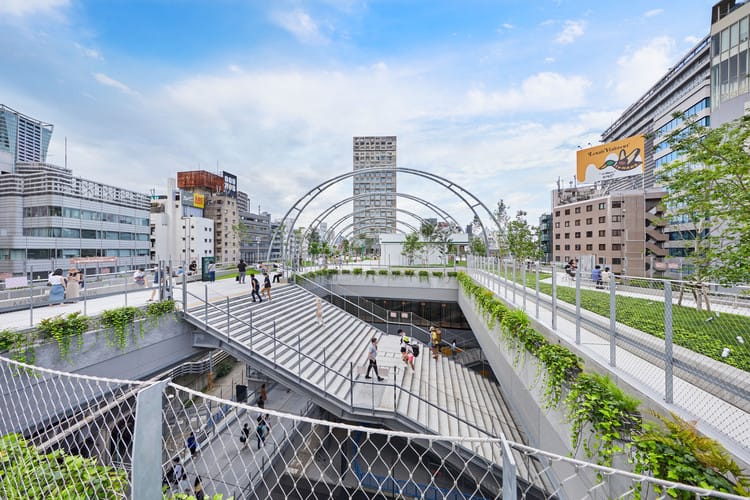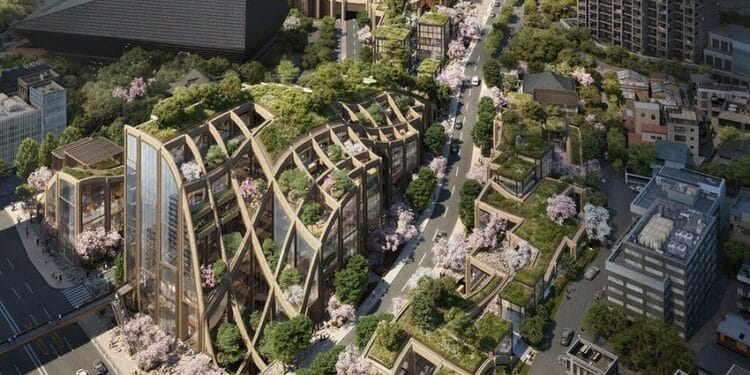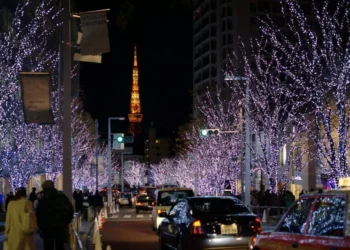No products in the cart.
Maximizing Space in Tokyo: A Testament to Japanese Ingenuity
Introduction: Space in Tokyo
In a metropolis like Tokyo, where space is a rare and precious commodity, the way the city uses its limited land is nothing short of remarkable. The dense population and the scarcity of available land have led to the development of innovative architectural and urban planning solutions. These solutions make the most out of every inch. This unique approach to space utilization in Japan can be seen in everything from residential designs to public infrastructure and transportation systems. Space in Tokyo is not just a matter of necessity; it’s a carefully considered element that influences how the city functions and feels. More so, the challenge of finding adequate space in Tokyo has pushed developers to think creatively.
The Challenge of Space in Tokyo: Geography and Population
Japan is known for its mountainous terrain. More than 70% of the country’s land is unsuitable for development. This geographical reality has forced the majority of the population to live in urban areas, where space is scarce and highly sought after. Tokyo, as the largest city in Japan, has become a model for maximizing the potential of limited land.
With millions of people living in a relatively small area, finding ways to efficiently use every inch of available space has become a crucial aspect of urban design.
Tokyo’s population density is one of the highest in the world. As the city continues to grow, the demand for space only increases. From high-rise buildings to narrow alleyways, Tokyo’s urban landscape exemplifies how thoughtful planning can turn even the most constrained areas into functional and livable spaces.
Space in Tokyo is also evident in the ingenious use of shared areas, fostering community interactions while maximizing limited real estate. Such spaces contribute significantly to the vibrant social life characteristic of this dynamic city.
Vertical Development: Tokyo’s Skyward Expansion
This verticality is a direct response to the need for more living and working space in Tokyo, illustrating how the city has embraced the challenge of limited space.
These developments ensure that space in Tokyo serves multiple purposes, allowing residents to thrive in a compact urban environment.
Given the limited availability of horizontal space, Tokyo has turned upwards in its efforts to maximize land use. The city’s skyline is filled with towering skyscrapers that combine residential, commercial, and recreational spaces in a single structure. By building vertically, Tokyo has been able to accommodate more people and businesses without expanding outward into the surrounding countryside.
These high-rise buildings are not just a practical solution to population density; they are also a testament to Tokyo’s architectural creativity. Buildings like the Tokyo Skytree and Shibuya Scramble Square incorporate a mix of office space, apartments, shopping centers, and entertainment venues all within the same structure. This multi-functional design ensures that every square meter is used to its fullest potential.
Efficient transportation systems are essential for maximizing space in Tokyo, allowing for quick travel across the densely populated urban landscape.
Vertical living is not limited to large buildings. Even smaller spaces within residential areas are designed to optimize every floor. Many residential complexes in Tokyo feature stacked homes with efficient layouts. These developments create a sense of community while still providing the privacy and comfort that residents need.
The strategic placement of commercial spaces within transportation hubs exemplifies the innovative use of space in Tokyo, making commuting more convenient and enjoyable.
Efficient Transportation: Space in Tokyo’s Public Systems
Even in green spaces, the effective use of space in Tokyo allows for relaxation and recreation amidst the urban hustle.
Tokyo’s public transportation system is one of the most efficient and crowded in the world. Its success can be attributed to the smart use of space. With millions of passengers traveling daily, the city’s metro system is designed to handle an enormous volume of people while making the most of the available space.
These initiatives reflect the city’s commitment to integrating nature while optimizing space in Tokyo for its residents’ benefit.
Train stations and subway cars in Tokyo are built with a keen awareness of how space affects the flow of passengers. The compact design of Tokyo’s train stations allows for a high level of efficiency, even during rush hours.
This intricate balance of urbanity and greenery is a hallmark of how space in Tokyo is utilized, showcasing a harmonious coexistence.
As innovations emerge, the conversation around space in Tokyo continues to evolve, promising exciting developments in urban living.
Moreover, Tokyo’s transportation hubs are often integrated into larger commercial developments, ensuring that even the busiest areas are used to their fullest potential. For example, large shopping malls and office buildings are often built above or below train stations, allowing people to shop or work without needing to leave the transportation network. This integration of spaces creates a seamless experience for commuters and visitors alike.

Public Spaces: Finding Room for Nature in the City
While Tokyo is known for its urban sprawl, the city also incorporates green spaces to provide residents with a break from the concrete jungle. Despite the limited space available, Tokyo’s parks are carefully designed to offer a natural retreat in the heart of the city. Parks like Yoyogi Park and Ueno Park are strategically placed to provide accessible green areas for relaxation and recreation.
The design of these parks focuses on maximizing the available space. Pathways, open fields, and recreational facilities are carefully planned to create an enjoyable experience for visitors. Even in the most crowded neighborhoods, there are pockets of greenery where people can escape the hustle and bustle of the city.
Tokyo’s commitment to creating green spaces extends beyond parks. The city is also known for its rooftop gardens and green buildings. These environmentally-conscious designs not only provide a space for nature but also help improve air quality and reduce the urban heat island effect.
Conclusion: The Art of Space Utilization in Tokyo
The way space is used in Tokyo is a testament to the ingenuity and creativity of Japanese architects, urban planners, and designers. In a city where land is limited, every inch is carefully considered. This ensures efficient and effective use. Whether through micro-apartments, vertical buildings, or thoughtful integration of green spaces, Tokyo has developed a unique approach.
As Tokyo continues to grow, the city will undoubtedly face new challenges in terms of space utilization. However, with the city’s history of creative problem-solving, new innovations in urban planning and design will continue to shape Tokyo’s landscape for years to come.










